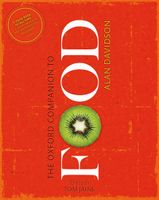Advertisement
Palm Oil
Published 2014
This is usually referred to as the oil palm. Originally it was only of importance in its native W. Africa, where it grows in the hot, moist region inland from the Bight of Benin and up the Congo Valley. The most common African name for its nut, from which the oil is taken, is dende (often written as dendé or dendê); and it is under this name that the oil is known in Brazil; where it has been described (by Sokolov, 1991) as ‘the heart and soul of one of the hemisphere’s great postcolonial food cultures’. It had arrived there, in the region of Bahia, with slaves brought from W. Africa by the Portuguese, and enabled these Yoruba or Hausa slaves to recreate the essential smell and taste of their homeland in the New World. Even where dende oil is not available, people of African heritage have found ways of colouring their cooking oils red to resemble it, so that outside Brazil and Caribbean Colombia, annato is used as a dye to produce a visual analogue.


